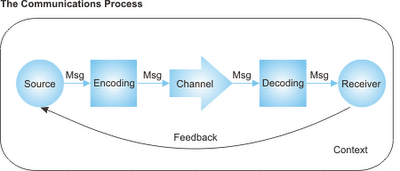What is a Communications Plan?
A Communications Plan is a document that details how key messages will be transmitted to a target audience.
Why is a Communications Plan Important?
A good Communications Plan is a reference or road map for different team members or stakeholders involved in transmitting key messages to a target audience. It makes sure everyone is on the same page (pun intended).
COMMUNICATIONS PLAN - TEMPLATE
PURPOSE STATEMENT
• Brief, thoughtful statement that communicates your mandate from the organization
Based on three questions
• Why does your department exist?
• What, in broad terms, does it do?
• What does it contribute?
SITUATION ANALYSIS
• Identify problem/challenge/opportunity your organization is facing
• Briefly outline the research and statistics that led to the determination of the PR problem or opportunity
• Note whether this plan is a one-time effort, a long-term effort), or a response to a crisis or negative public opinion
ORGANIZATIONAL GOALS
• Clear statement of intent to solve a significant problem or achieve a significant result
• Goals describe future desired results toward which present efforts are directed
• State the major accomplishment sought
• Tells what will happen when key results are achieved
COMMUNICATION OBJECTIVES
• Specific, measurable action steps through which the goal is accomplished
• Should be set for each audience identified
• Begin with “to” followed by a verb
• Specify the outcome
• Set a target date when outcome will be achieved
• Objectives should not be the ‘means’ but the ‘end’
Company/Brand’s Communication Principles
o Consistent, coordinated and high quality: must present a consistent face to its audiences across all communication channels. Communication must be clear, concise, targeted, relevant and using channels/tools/formats appropriate to Brand’s diverse and busy audiences.
o Reflective of Brand culture: Communication must reflect Brand’s culture and values.
o Multiple methods of dissemination/communication: Where possible, information will be shared using multiple communication channels/tools/formats to accommodate Brand’s diverse audiences and their individual preferences.
o Two‐way communication: Communication will facilitate conversation and engagement.
o Sustainability: Communication initiatives must be realistic and sustainable, reflecting Brand’s financial and human resource realities.
o Measurement and Evaluation: Where possible, communication initiatives will be evaluated to ensure effectiveness and to facilitate adjustments as required.
TARGET AUDIENCE
Iteration 1
• Identify by name
• List in priority of importance to achieving goals
• Key insights
• demographics
• Psychographics
KEY MESSAGES
• To inform the public in an easily understood and professional manner about emerging issues or about the business of your organization
• Appeal to their hearts as well as their minds
• Keep it simple
• Use the active voice for more power
• Personalize
STRATEGY STATEMENTS
• Describes how, in concept, an objective is to be achieved (what you want to do)
• Offers a rationale for the actions and program components that are planned – why you think each is important to do
• Links activity to target audience
• Defines contribution to the organization
TACTICS
1. Activities specifically created and selected to reach specific and measurable objectives
2. Actual ways in which strategies are executed
3. Look at each tactic from the standpoint of what it will do to achieve the objective
4. Involves using the tools of communication to reach audiences with key messages
COSTS
• Be specific
• Detail costs for each initiative included in your strategies
• Costs should include:
• hard costs (internal and external)
• staff time
• alternatives
EVALUATION
• Used to know if you met your objectives
• List methods you will use, once your plan has been implemented, to obtain feedback
• Indicate how you will measure effectiveness
• Indicate how will you know if your plan is ‘on track’
Awareness (Reach)
Interest
Desire
Action
Expected Results
TIMELINES / PROJECT PLAN
REPORT / TRACKING
This section is to keep track of the different marketing URLs we plan to use in the tactics.
To be completed when the web content is approved and posted.
APPENDIX
In this section you can include any relevant documentation. For example Communications Channels or Request for Service templates etc.







